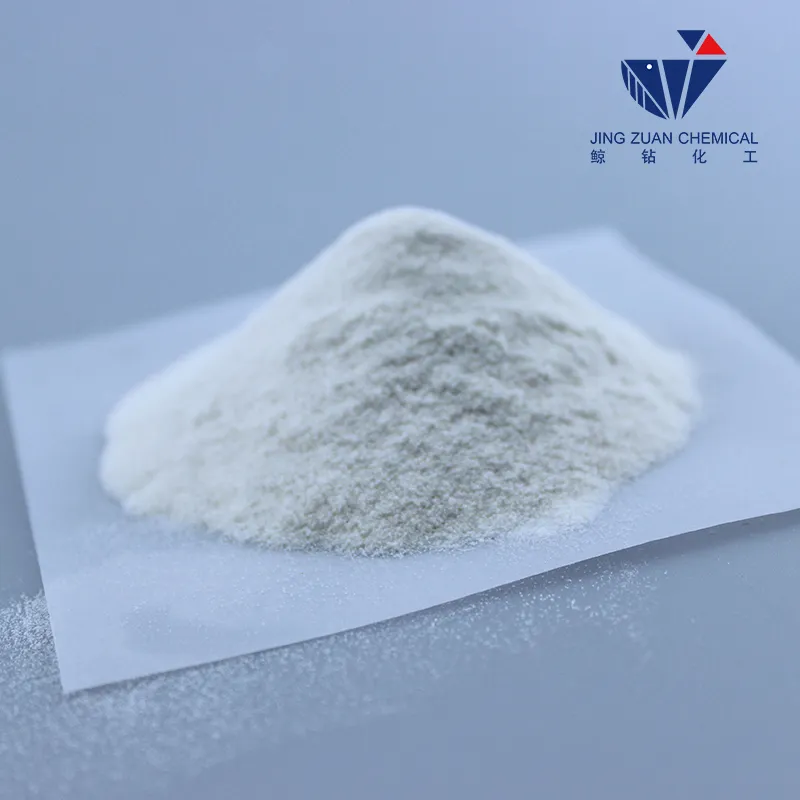
Nën . 15, 2024 05:52 Back to list
what is hpmc
What is HPMC?
Hydroxypropyl Methylcellulose (HPMC) is a versatile and widely used cellulose derivative that has gained significant attention across various industries due to its unique properties and functionalities. As a modified form of cellulose, HPMC is synthesized through the chemical modification of cellulose, which is a natural polymer derived from plant materials. This article will explore the characteristics, applications, and advantages of HPMC, shedding light on its importance in different fields.
Characteristics of HPMC
HPMC is known for its exceptional solubility in water, making it an ideal ingredient in numerous formulations. It is available in various grades, which can be tailored to achieve specific viscosity levels and solubility profiles. HPMC typically appears as a white, odorless powder and has a strong ability to form gels and films, which underpins its functionality in many applications.
One of the most notable features of HPMC is its non-toxic and biodegradable nature, making it a safer alternative to synthetic polymers. Additionally, it is stable under a wide range of pH levels and temperatures, providing formulations with robust consistency. HPMC is also resistant to enzymatic degradation, enhancing its longevity in various applications.
Applications of HPMC
HPMC is widely utilized across multiple sectors, including pharmaceuticals, food, cosmetics, and construction.
1. Pharmaceuticals In the pharmaceutical industry, HPMC serves as a crucial excipient, acting as a binder, thickening agent, and film-forming agent in tablet formulations. Its ability to control the release of active ingredients makes it an essential component in sustained-release formulations, aiding in prolonged therapeutic effects. Furthermore, HPMC is also used in ophthalmologic preparations, such as eye drops, due to its lubricating properties, ensuring comfort and hydration for the eyes.
what is hpmc

2. Food Industry In the food sector, HPMC is employed as a thickener, emulsifier, and stabilizer. It contributes to the texture and mouthfeel of various food products, such as sauces, dressings, and baked goods. Its ability to retain moisture also helps prolong shelf life and improve the overall quality of food items. Moreover, HPMC is suitable for vegetarian and vegan alternatives because it is derived from plant cellulose.
3. Cosmetics and Personal Care HPMC is widely used in cosmetics and personal care products due to its gelling and thickening properties. It is often found in creams, lotions, shampoos, and conditioners, contributing to the desired texture and stability of these formulations. Additionally, it helps enhance the spreadability and overall sensory experience of personal care products.
4. Construction In the construction industry, HPMC is utilized as a crucial additive in cement-based products, such as tile adhesives and self-leveling compounds. It improves workability, enhances water retention, and provides extended open time, allowing for better adhesion and application. The incorporation of HPMC also contributes to the overall strength and durability of the final product.
Advantages of HPMC
The widespread use of HPMC can be attributed to its numerous advantages. First and foremost, its non-toxic and biocompatible nature makes it an attractive choice for applications in pharmaceuticals and food products. Its versatility allows formulators to customize properties according to specific needs, ensuring optimal performance.
Moreover, HPMC’s ability to form a gel-like consistency upon hydration enables controlled release of active ingredients in various applications. This is particularly beneficial in drug delivery systems, where precise dosing is crucial. Its stability across different pH levels and temperature ranges further enhances its practicality in diverse environments.
In conclusion, Hydroxypropyl Methylcellulose (HPMC) is a valuable cellulose derivative with a broad range of applications across multiple industries. Its unique properties, including water solubility, non-toxicity, and stability, make it an essential ingredient in pharmaceuticals, food, cosmetics, and construction. As innovation continues to drive advancements in product formulations, HPMC remains at the forefront, contributing to enhanced performance and sustainability. Whether in drug delivery systems, culinary creations, or personal care, the importance of HPMC cannot be overstated, solidifying its place as a vital component in modern formulations.
-
Unlocking the Benefits of HPMC Products: A Gateway to Versatile Applications
NewsAug.07,2025
-
Unleashing the Potential of HPMC Ashland: A Comprehensive Look
NewsAug.07,2025
-
Tile Bonding Cellulose: The Key to Superior Adhesion and Durability
NewsAug.07,2025
-
Hydroxypropyl Methylcellulose Powder: The Versatile Component in Modern Pharmaceuticals
NewsAug.07,2025
-
Hydroxyethyl Cellulose: The Versatile Solution for Various Industries
NewsAug.07,2025
-
Hydroxyethyl Cellulose (HEC): The Versatile Polymer for Various Applications
NewsAug.07,2025







